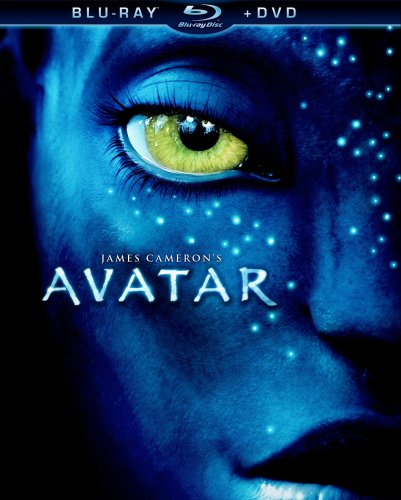
Back in December, James Cameron’s long-awaited gazillion-dollar 3D spectacle, Avatar, took box offices by storm. It shattered records and won a few Oscars, too (though it lost the big Best Picture prize to The Hurt Locker). Once it came out on Blu-ray, it shattered even more records. But now that the record-shattering frenzy is behind us, it’s a good time to take a step back and try to figure out what the fuss is all about.
For those of you who haven’t already seen it (yes, I know you’re out there), Avatar follows disabled Marine Jake Sully (Sam Worthington) on a mission to Pandora, a distant planet inhabited by an alien race known as the Na’vi. Jake’s job is to control an avatar—a clone created with half human and half native DNA—to get to know more about the Na’vi. But the corporate leaders have something else in mind. They ask Jake to dig deeper and report back on anything that will help the military move the Na’vi out of their home, allowing the company to mine the valuable mineral that’s funding the whole operation.
On his first mission, Jake gets separated from his team and is rescued by Neytiri (Zoe Saldana), a Na’vi princess. Led by a sign from their deity, the tribe agrees to make Jake one of them—to teach him their way of life. And as Jake learns more about the Na’vi, he starts to question his mission.
Like most of James Cameron’s films, Avatar is a truly epic journey—a full 162 minutes of colossal-budget action and effects. It’s not hard to see where the film’s nearly $300 million budget was spent. Every frame is visually stunning—from the weapons and gadgets used by the humans to the phosphorescent glow of Pandora at night. The visual aspects of this magical, imaginative adventure are all so expertly done, in fact, that you’ll probably forget that the Na’vi aren’t real—that they’re actually a clever (and very, very expensive) mix of motion-capture and CGI.
Visually, Avatar may be innovative and groundbreaking, but, when it comes to the story, it’s strictly old-school. There’s not much here that you haven’t seen before—from the greedy, militant humans to the sweet, spiritual natives. The same story pops up time and time again; in fact, this exact story (sans inter-species romance) was told just a matter of months before Avatar’s release, in the animated Battle for Terra. In that way, Avatar is a disappointment. Though the story is relatively well-told, it’s formulaic and predictable—and that’s simply unacceptable when you’re making such a groundbreaking film. You’d think that somewhere, in that massive budget—one of the largest budgets in the history of Hollywood—Cameron could have spared an extra million or two (perhaps by shaving a minute or two—or 40—off the runtime) for a really good screenwriter, instead of doing it all by himself. Then maybe the story could have lived up to the film’s remarkable graphics.
Disappointing story aside, though, Avatar is still one of those movies that you’ve just got to see. This, my friends, is the future of filmmaking: the ability to tell any story in any imaginary location and make it look unbelievably real. Someday soon, a filmmaker will pair this technology with an original story to make a truly brilliant film—one that will then go on to win a much-deserved Best Picture Oscar—but Avatar is definitely a breathtaking step in the right direction.
Blu-ray Review:
Avatar was specifically designed and filmed as a 3D film—and, as such, it looked absolutely breathtaking on a huge IMAX screen. So if you didn’t get a chance to see it on the big screen, you obviously won’t get the full effect on your TV at home. Still, the Blu-ray release is pretty impressive—though I highly recommend watching it on the biggest, clearest screen possible.
As for extras, there are none—unless you count the included DVD disc as an “extra.” But I’m sure there are plenty of additional releases, with plenty of all-new special features, yet to come.



